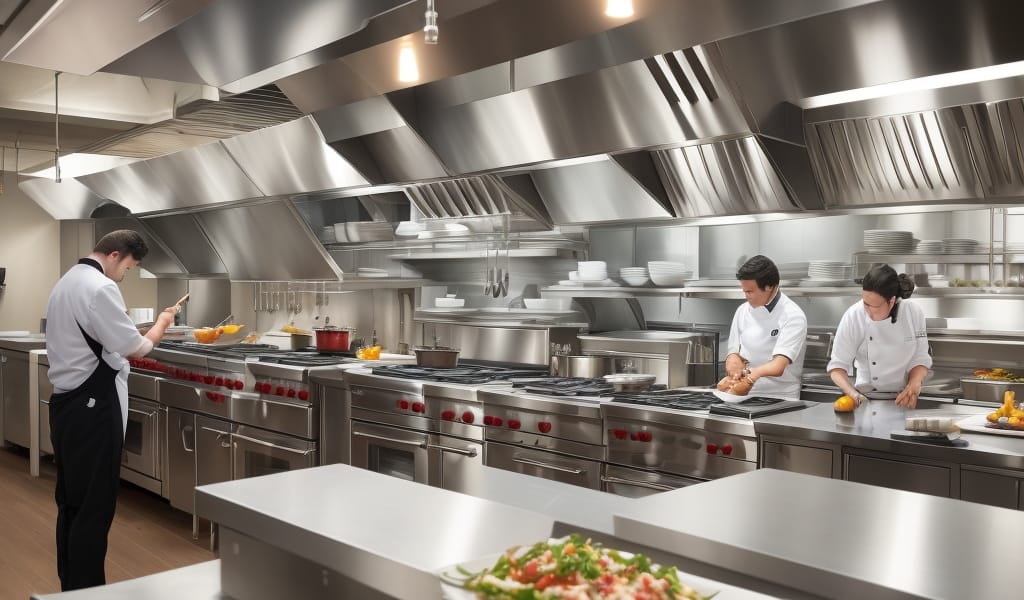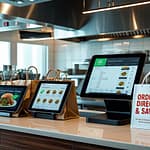Key Takeaways:
- Regularly conduct a restaurant audit to identify areas of profit leakage.
- Implement cost control measures in areas such as inventory, labor, and utilities to limit unnecessary expenses.
- Monitor and manage food waste, a common source of financial loss in the restaurant industry.
- Review your menu pricing regularly to ensure it covers costs and generates profit.
- Train your staff to understand the importance of cost control and to prevent theft or misuse of resources.
Is Your Restaurant Leaking Money? Here’s Where to Look
Spot hidden losses and fix financial leaks fast
Running a restaurant is more than just serving delicious meals and creating memorable dining experiences. Owners and managers must continually monitor costs, profits, and operations to maintain a healthy bottom line. Unfortunately, many restaurants unknowingly suffer from profit leakage—small financial inefficiencies that, when left unchecked, can significantly impact profitability over time. Identifying and addressing these leaks requires consistent diligence and a strategic approach.
In this guide, we’ll uncover common areas where restaurants lose money, offer actionable advice to regain control, and illustrate how conducting regular restaurant audits can safeguard your profits.
Understanding Profit Leakage in Restaurants
Profit leakage refers to subtle, often unnoticed, financial losses within your operations. Unlike major losses caused by theft or catastrophic events, these leaks add up quietly and steadily, significantly eroding your profits. Common causes include inefficient inventory management, poor menu pricing strategies, labor cost mismanagement, and inadequate waste controls.
Many restaurant owners only notice these leaks after extensive damage has occurred. Conducting a thorough restaurant audit—regularly and proactively—can pinpoint these losses early, allowing corrective action before they escalate.
Common Areas of Profit Leakage and How to Fix Them
1. Inventory and Ingredient Waste
Ingredient wastage is one of the most persistent sources of profit leakage. Food spoilage, mismanaged portion control, and over-ordering ingredients can quickly add up to significant losses.
- Conduct Regular Inventory Audits: Regularly perform physical inventory counts and reconcile them against your records to identify discrepancies early.
- Implement First-In, First-Out (FIFO): Rotate inventory properly to reduce spoilage and ensure ingredients are used efficiently.
- Standardize Portion Sizes: Train kitchen staff on precise portion control to maintain consistency and reduce unnecessary waste.
For example, after conducting an in-depth restaurant audit, one mid-sized restaurant chain discovered they were losing thousands of dollars monthly due to produce spoilage. By adopting strict FIFO protocols and implementing daily inventory checks, they reduced waste by over 30%, significantly boosting profits.
2. Poor Menu Pricing and Cost Management
Incorrect menu pricing can quietly drain your restaurant’s profitability. If your pricing strategy doesn’t accurately reflect ingredient costs, labor expenses, and overhead, you could be losing money with every dish served.
- Perform Menu Engineering: Regularly analyze menu item profitability, popularity, and ingredient costs to adjust pricing strategically.
- Keep Track of Food Cost Percentages: Calculate accurate food costs for each dish and monitor these percentages regularly to ensure healthy margins.
- Optimize Menu Offerings: Remove or modify items that consistently underperform or have low margins, focusing instead on profitable and popular options.
Consider the case of a local Italian restaurant that realized its signature pasta dish was priced too low to cover rising ingredient costs. After conducting a restaurant audit and adjusting pricing accordingly, they saw a 15% increase in overall profitability within two months.
3. Labor Cost Mismanagement
Labor expenses are typically one of the highest costs restaurants face. Excess staffing during slow periods, inefficient scheduling, and overtime pay can quickly erode profits.
- Utilize Labor Scheduling Software: Invest in software solutions that analyze sales data and employee performance to optimize staffing levels.
- Cross-Train Employees: Train staff in multiple roles, allowing flexible scheduling and efficient staffing adjustments during peak and slow periods.
- Monitor Overtime Closely: Set clear policies to minimize overtime and regularly review labor reports to keep staffing costs under control.
A popular café chain conducted a detailed labor cost audit and discovered excessive overtime payments due to poor scheduling practices. By utilizing advanced scheduling software and cross-training employees, they reduced labor costs by over 12% within several months.
4. Energy and Utility Inefficiencies
Restaurants consume high amounts of energy and water, often leading to unnoticed financial losses through inefficient equipment usage and maintenance practices.
- Conduct Regular Equipment Maintenance: Ensure kitchen equipment, refrigeration units, and HVAC systems are regularly serviced to optimize energy efficiency.
- Install Energy-Efficient Appliances: Invest in equipment designed to reduce energy usage, resulting in lower utility bills and long-term savings.
- Educate Staff: Train employees on energy-saving practices, such as turning off equipment during downtime and managing water usage effectively.
One steakhouse identified a significant increase in utility costs through a routine restaurant audit. They invested in energy-efficient refrigeration and ovens, implemented staff training on energy conservation practices, and reduced monthly utility expenses by nearly 20%.
5. Inefficient POS and Payment Processing Systems
Outdated or inefficient Point-of-Sale (POS) systems can slow down operations, create errors, and negatively impact customer satisfaction. Additionally, high payment processing fees can chip away at profits invisibly.
- Evaluate Your POS System: Regularly review and update your POS technology to streamline operations, reduce errors, and improve overall efficiency.
- Negotiate Payment Processing Fees: Regularly review your merchant service agreements and negotiate better rates or consider switching providers if necessary.
- Train Staff on POS Best Practices: Ensure employees are proficient with POS operations, reducing mistakes, refunds, and chargebacks.
After an audit, a busy downtown café found they were losing significant profits due to excessive payment processing fees. By renegotiating their contract and upgrading their POS system, they saved thousands annually, directly benefiting their bottom line.
Conducting Regular Restaurant Audits for Continuous Improvement
Routine restaurant audits provide clear, actionable insights into your operations. Regularly scheduled audits can identify small problems before they become significant issues, helping you maintain healthy profit margins. A comprehensive audit should cover inventory management, labor costs, utility expenses, menu pricing, and payment processing systems.
- Set a regular audit schedule (monthly, quarterly, or bi-annually).
- Utilize detailed checklists covering all potential leakage points.
- Involve key staff members who understand day-to-day operations.
- Analyze audit results and promptly implement corrective actions.
Integrating restaurant audits into your operational culture ensures continuous improvement, profitability, and long-term success.
Conclusion: Plug Profit Leaks and Boost Your Bottom Line
Profit leakage can silently undermine your restaurant’s financial health, but it doesn’t have to go unchecked. By proactively identifying these hidden losses through regular audits, improving inventory management, carefully managing labor and utility costs, optimizing menu pricing, and upgrading POS systems, you can strengthen your restaurant’s finances.
Stay vigilant, involve your team, and commit to continuous operational improvements. The effort you invest in plugging financial leaks today will pay off significantly, ensuring sustainable profitability and long-term success.






Comments
Be the first to comment on this article.